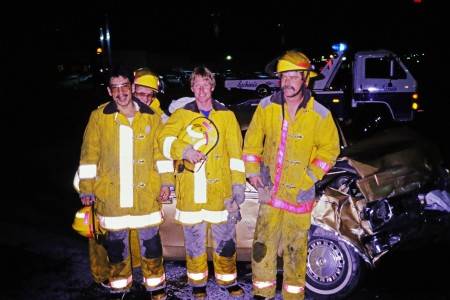CEREBROVASCULAR ACCIDENT (CVA)
ALL LEVELS
DESIGNATION OF CONDITION
Signs and symptoms may include any or all of the following: disorientation, weakness or paralysis to one side, excessive drooling, facial drooping, unequal pupils, difficulty in speaking, elevated BP, headache, and/or seizures. Pt. may have a past history of CVA or TIA.
EMPHASIS ON PATIENT CARE
Maintain adequate perfusion, adequate oxygenation, and transport quickly to the nearest
stroke center. As of February 2020 both MVRMC and MMC are certified Stroke Centers.
1. Primary Management - Assess ABC’s and manage as indicated.
2. Perform Cincinnati pre-hospital stroke assessment (see below)
3. Establish timeline of onset of symptoms. Establish and communicate to hospital the “Last Known Well Time” (LKWT).
4. Transport the patient to the closest Stroke Center.
5. Obtain blood glucose level.
6. Secondary Management - History, physical exam, vital signs
7. Notify the receiving facility that you are in-route with a suspected stroke patient.
AEMT
1. IV or Saline Lock
PARAMEDIC
1. Cardiac Monitor and obtain 12 lead
The Cincinnati Prehospital Stroke Scale (CPSS)
Abnormal Speech Have the patient say “you can’t teach an old dog new tricks”
Normal – patient uses correct • words with no slurring
Abnormal – patient slurs words, • uses the wrong words, or is unable to speak
Facial Droop (have patient show teeth or smile):
Normal – both sides of face • move equally
Abnormal – one side of face • does not move as well as the other side
Arm Drift (patient closes eyes and extends both arms straight out for 10 seconds):
Normal – both arms move the • same or both arms do not move at all (other findings, such as pronator drift, may be helpful)
Abnormal – one arm does not • move or one arm drifts down compared with the other
ALL LEVELS
DESIGNATION OF CONDITION
Signs and symptoms may include any or all of the following: disorientation, weakness or paralysis to one side, excessive drooling, facial drooping, unequal pupils, difficulty in speaking, elevated BP, headache, and/or seizures. Pt. may have a past history of CVA or TIA.
EMPHASIS ON PATIENT CARE
Maintain adequate perfusion, adequate oxygenation, and transport quickly to the nearest
stroke center. As of February 2020 both MVRMC and MMC are certified Stroke Centers.
1. Primary Management - Assess ABC’s and manage as indicated.
2. Perform Cincinnati pre-hospital stroke assessment (see below)
3. Establish timeline of onset of symptoms. Establish and communicate to hospital the “Last Known Well Time” (LKWT).
4. Transport the patient to the closest Stroke Center.
5. Obtain blood glucose level.
6. Secondary Management - History, physical exam, vital signs
7. Notify the receiving facility that you are in-route with a suspected stroke patient.
AEMT
1. IV or Saline Lock
PARAMEDIC
1. Cardiac Monitor and obtain 12 lead
The Cincinnati Prehospital Stroke Scale (CPSS)
Abnormal Speech Have the patient say “you can’t teach an old dog new tricks”
Normal – patient uses correct • words with no slurring
Abnormal – patient slurs words, • uses the wrong words, or is unable to speak
Facial Droop (have patient show teeth or smile):
Normal – both sides of face • move equally
Abnormal – one side of face • does not move as well as the other side
Arm Drift (patient closes eyes and extends both arms straight out for 10 seconds):
Normal – both arms move the • same or both arms do not move at all (other findings, such as pronator drift, may be helpful)
Abnormal – one arm does not • move or one arm drifts down compared with the other
